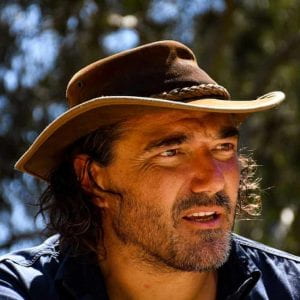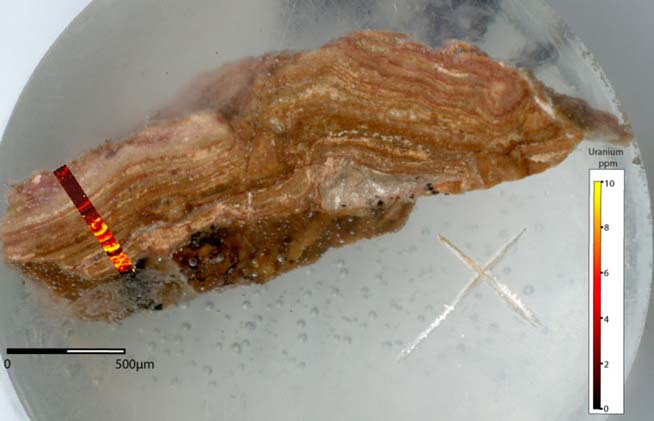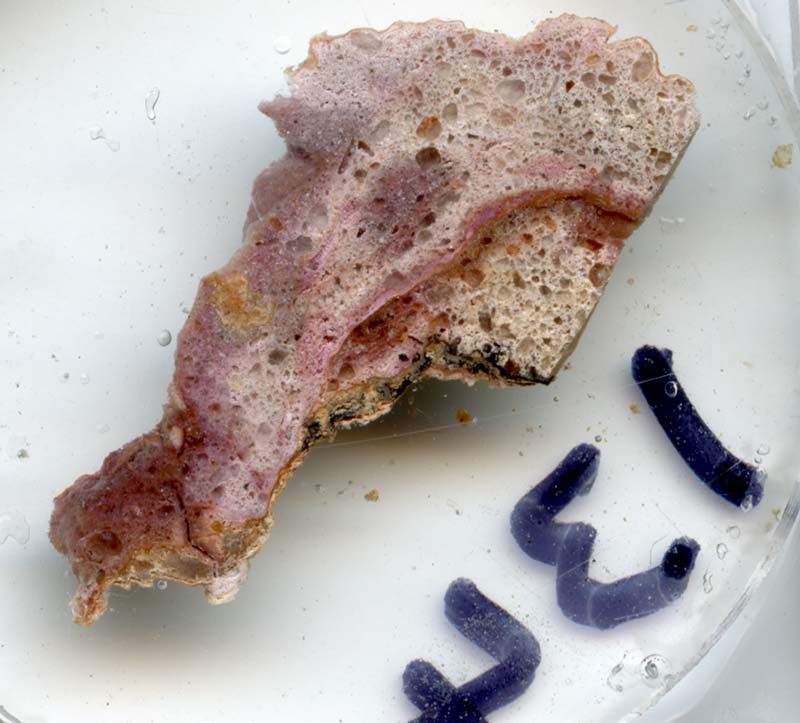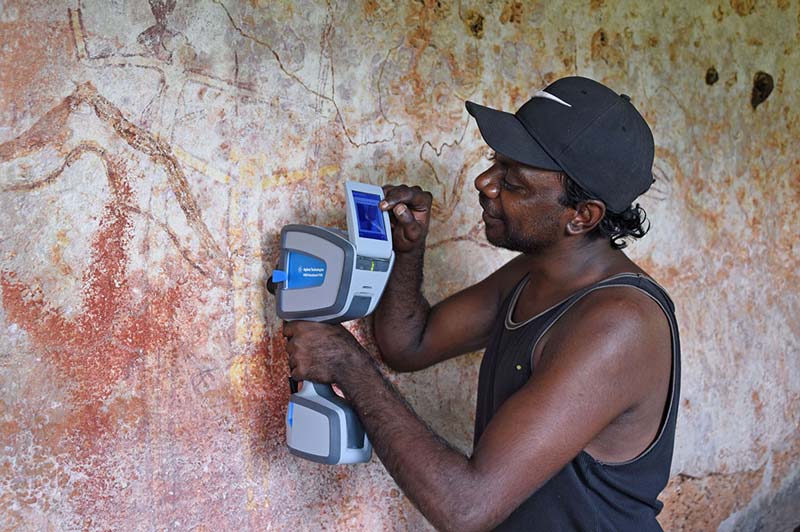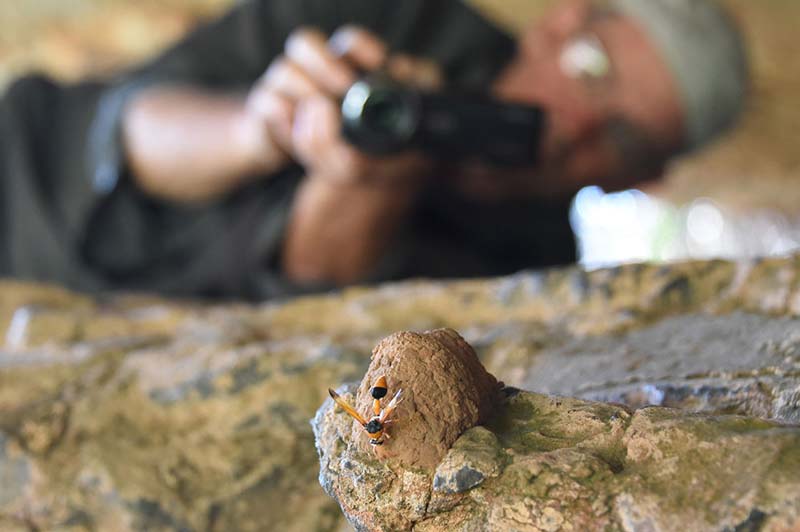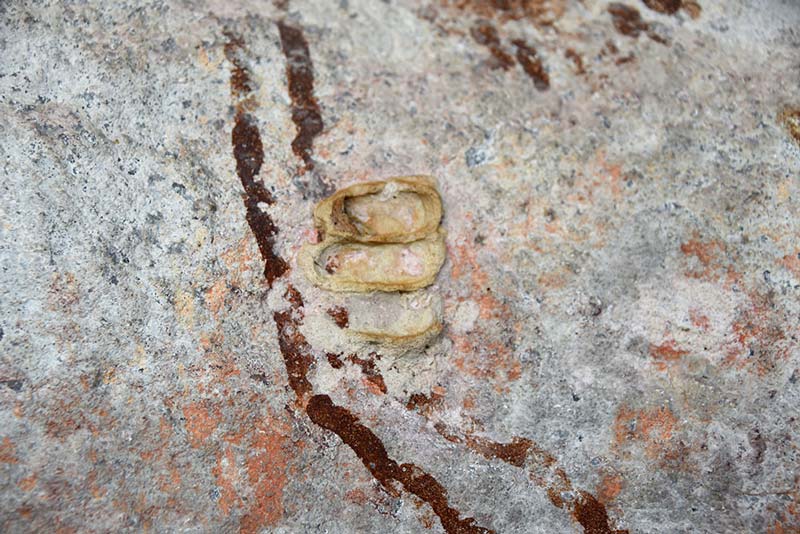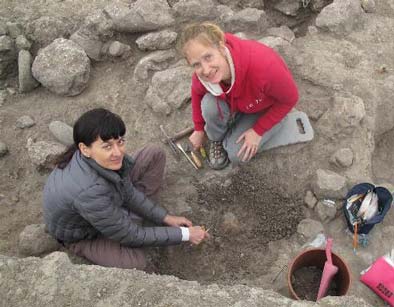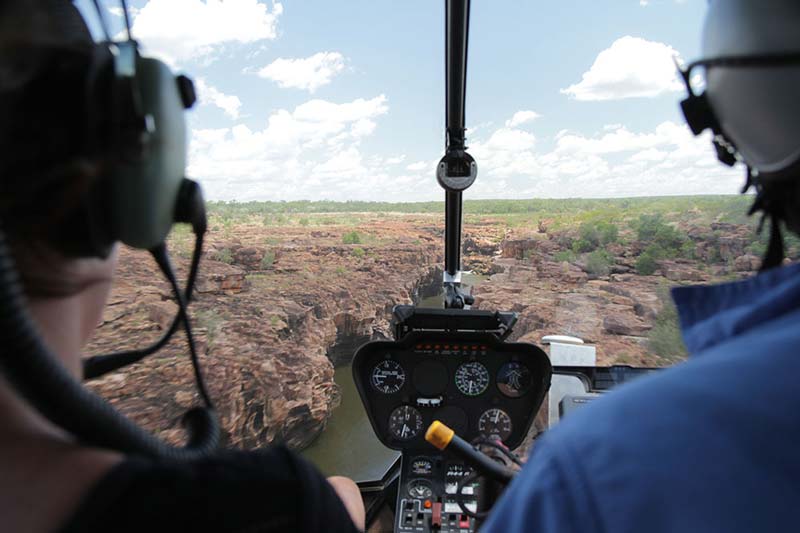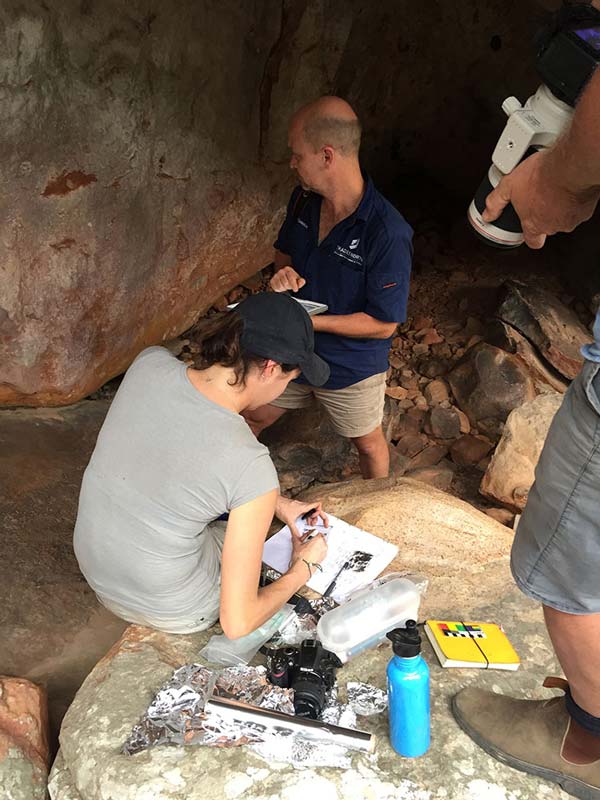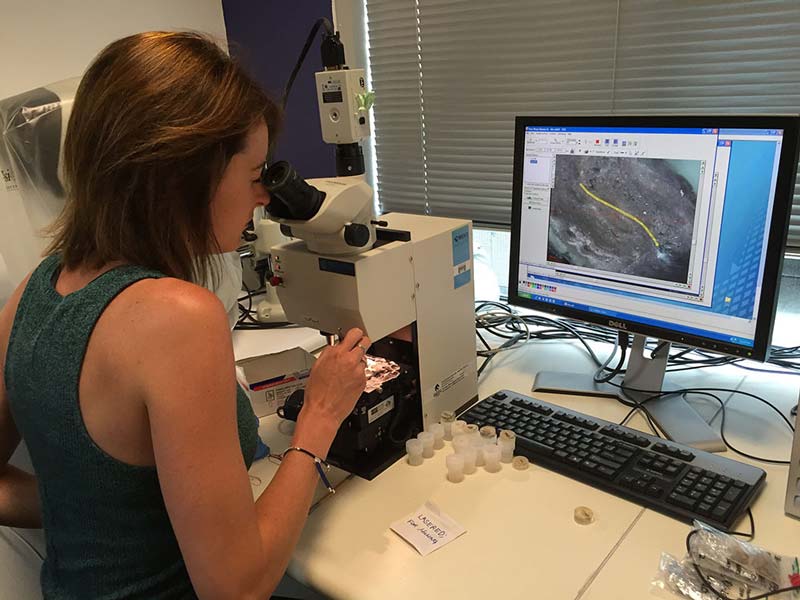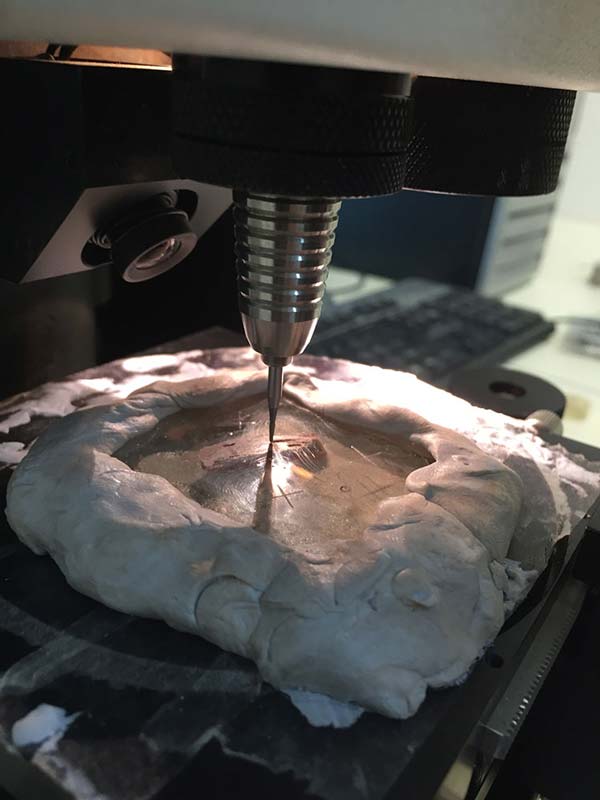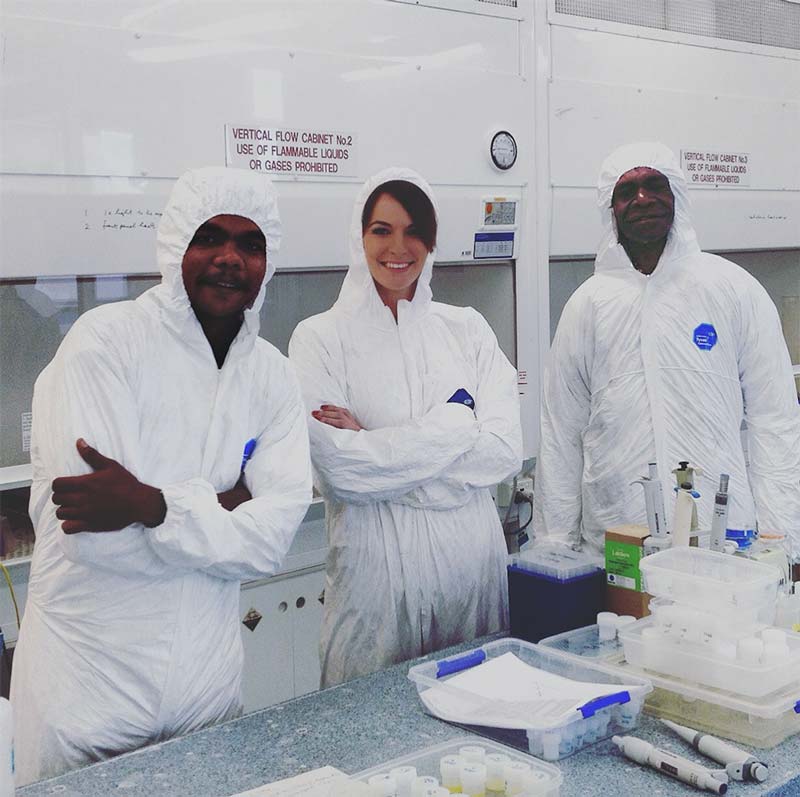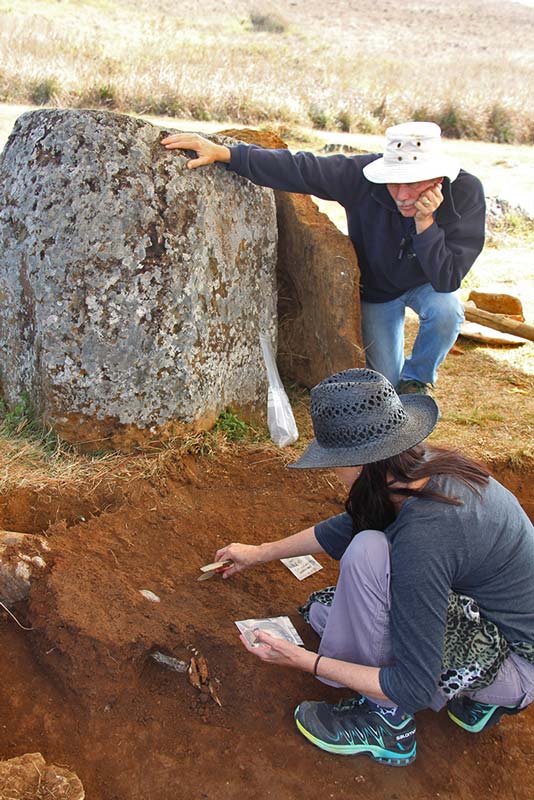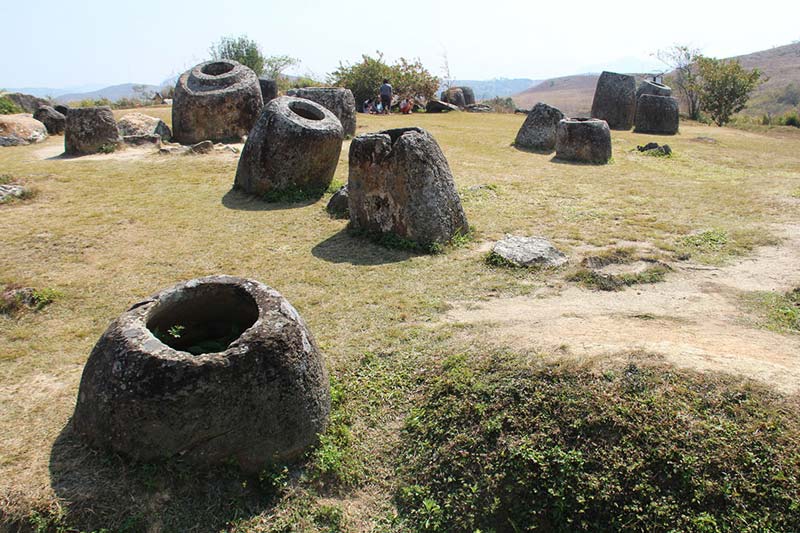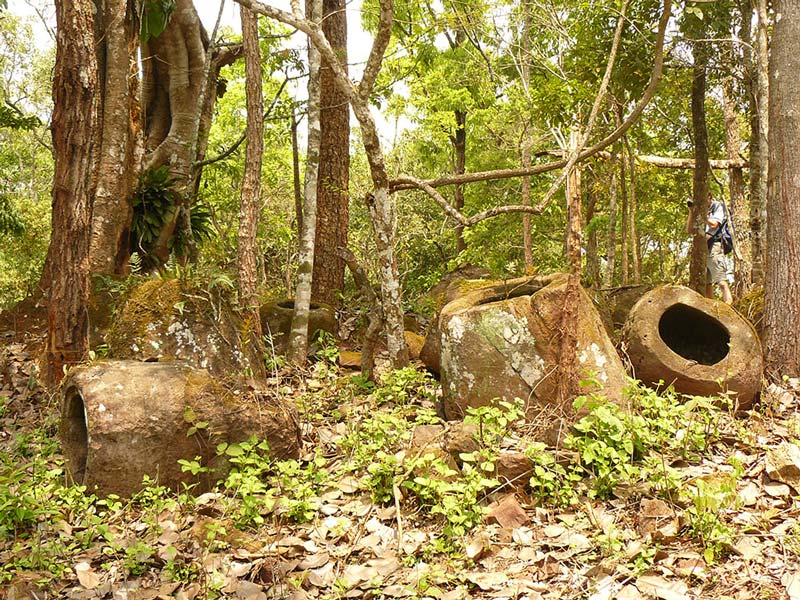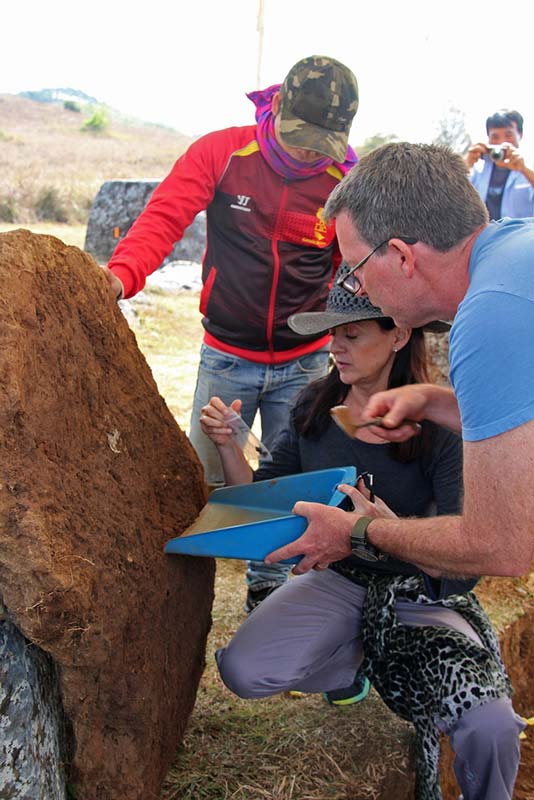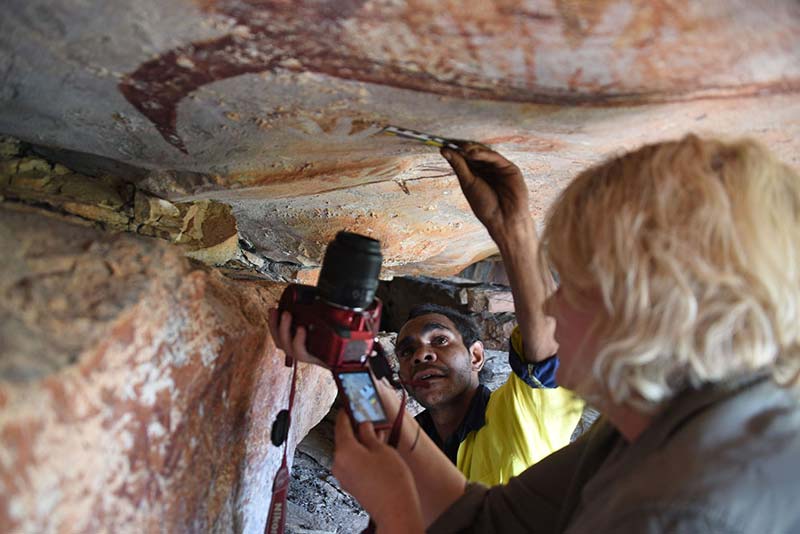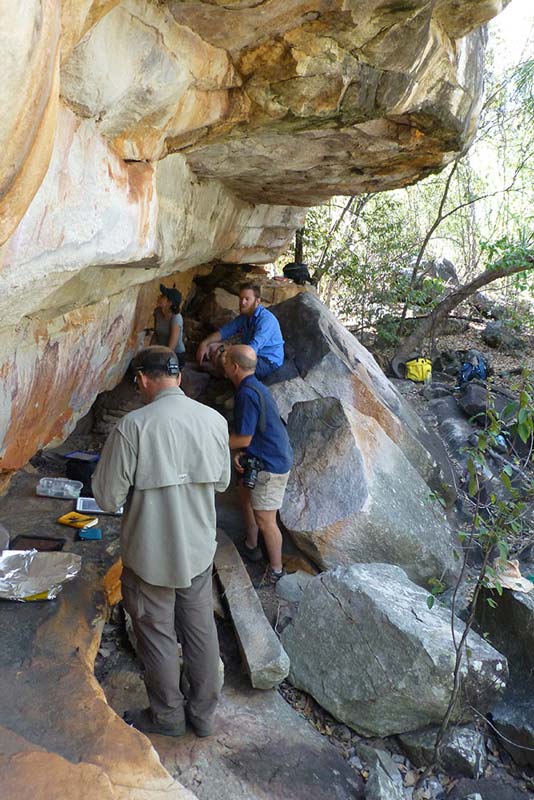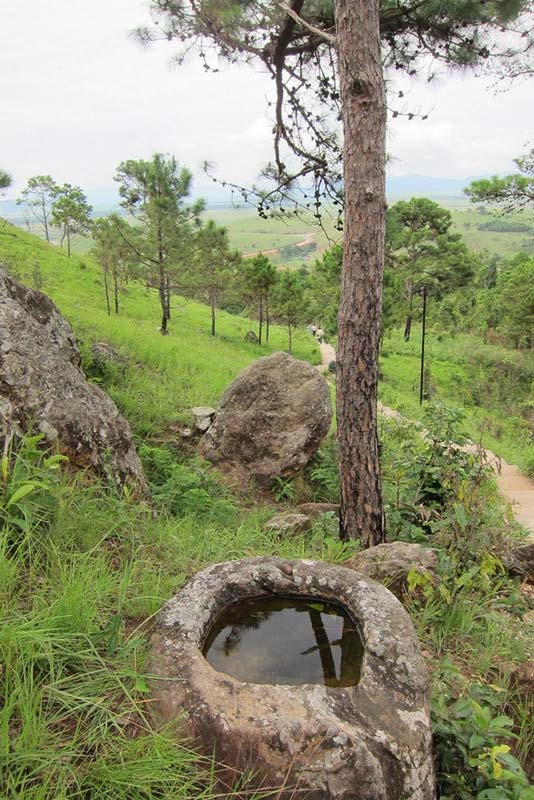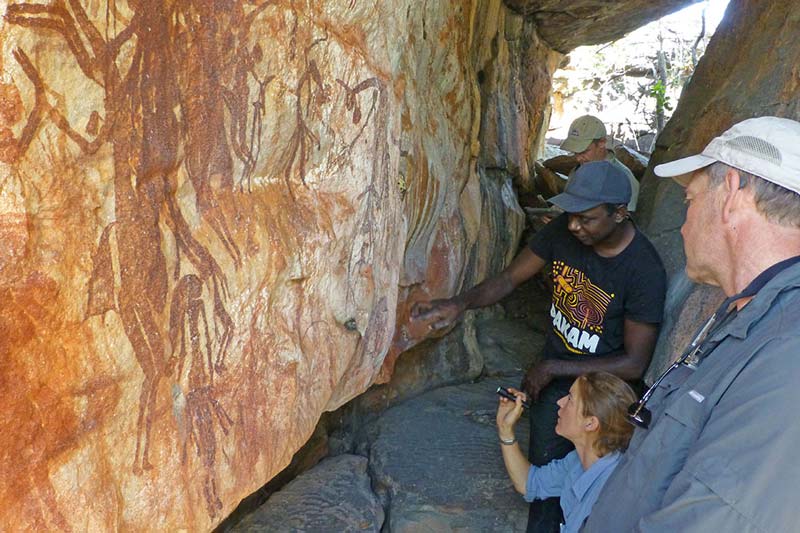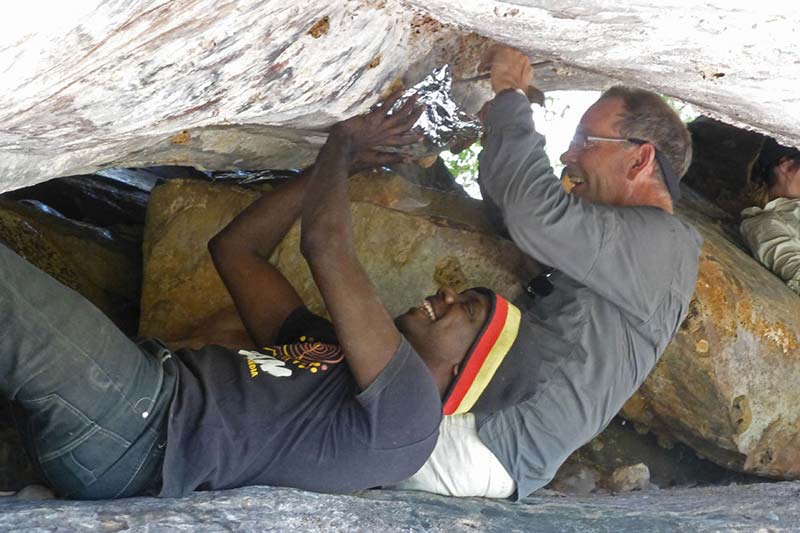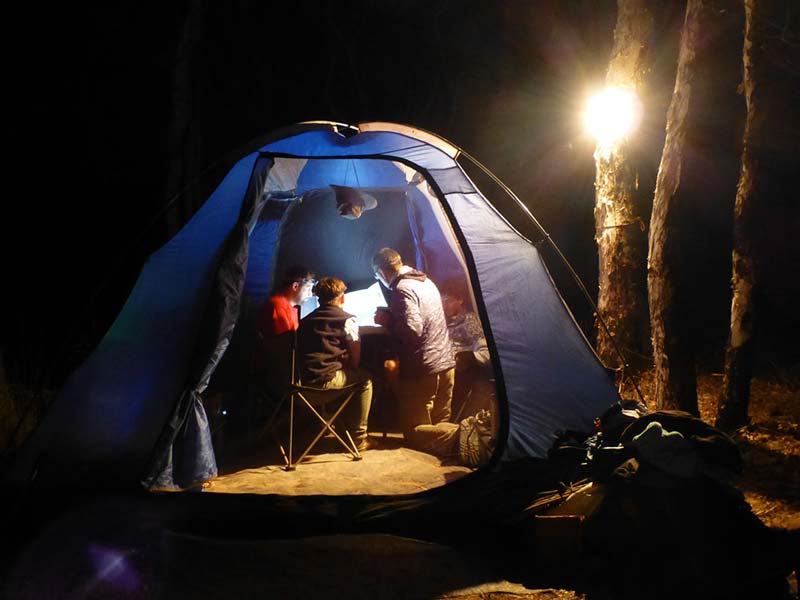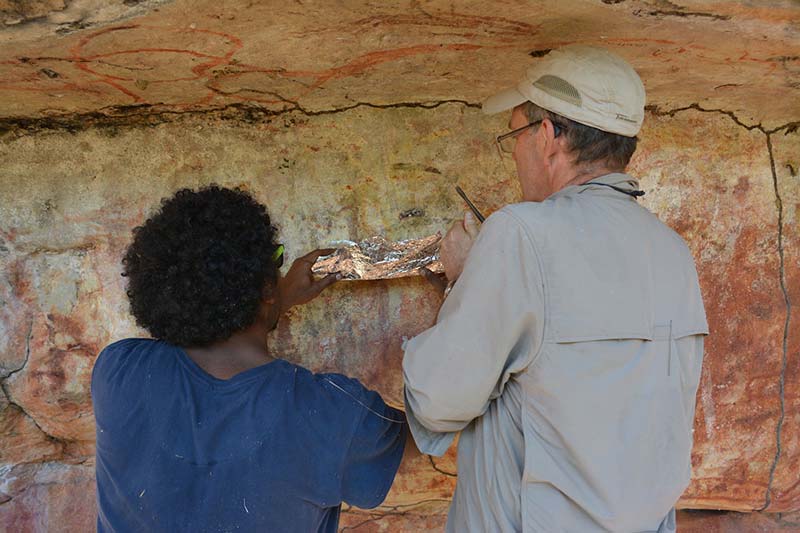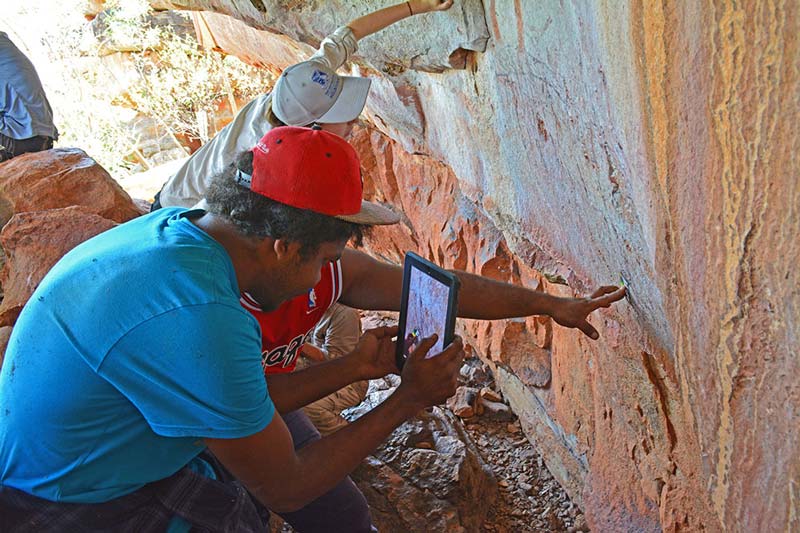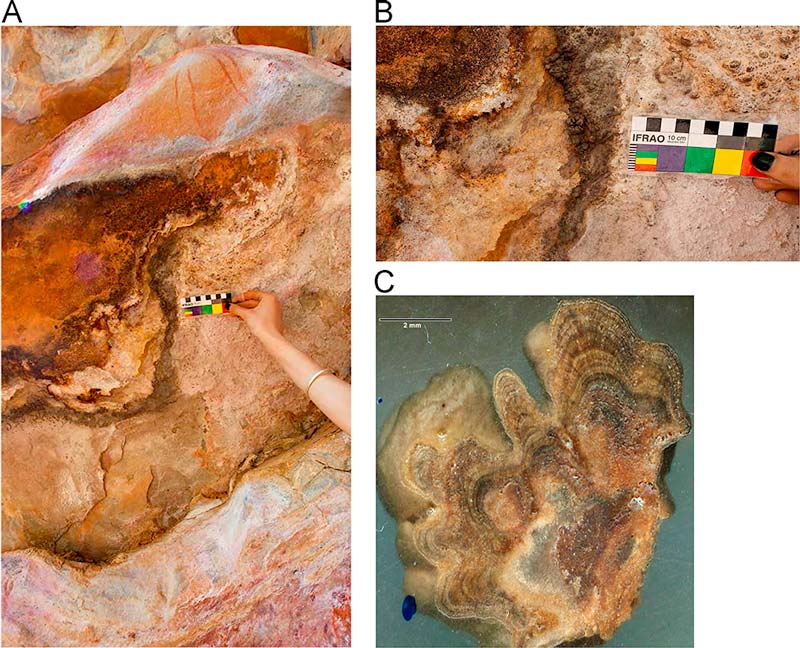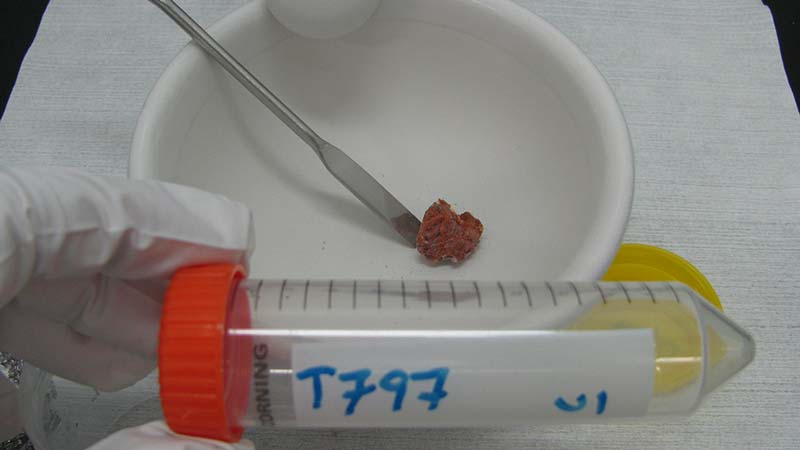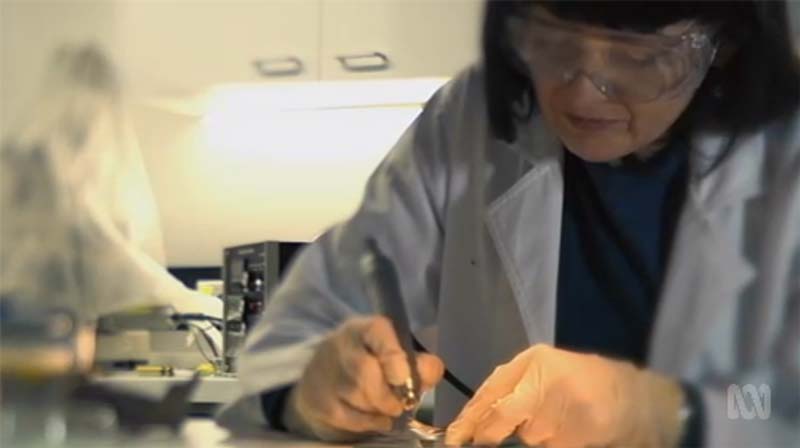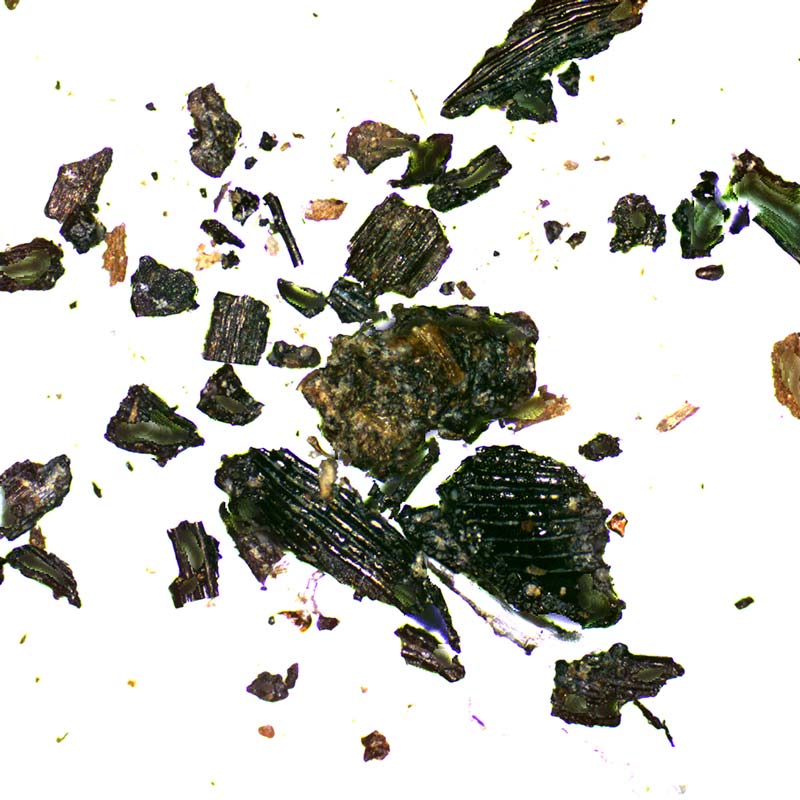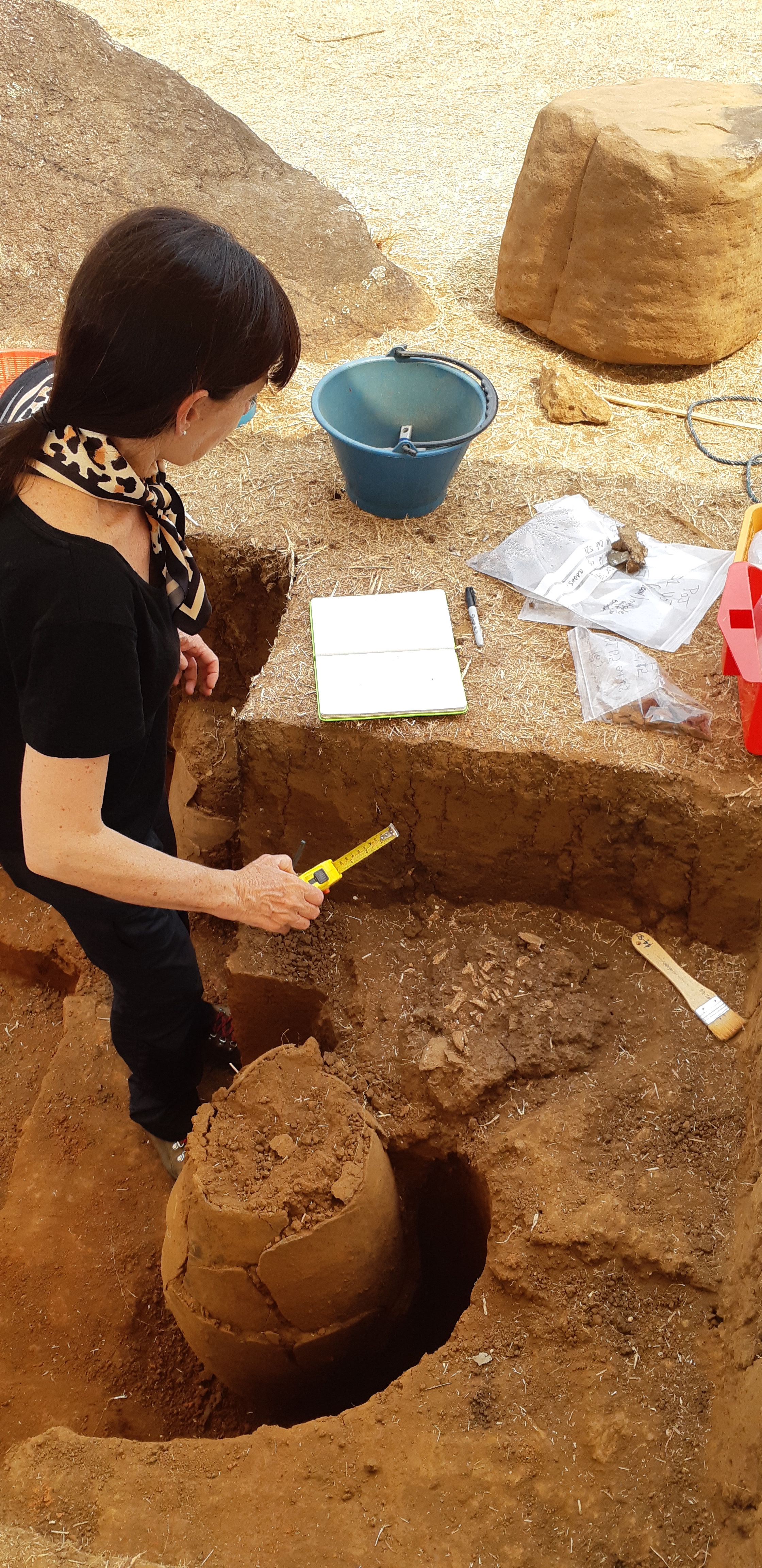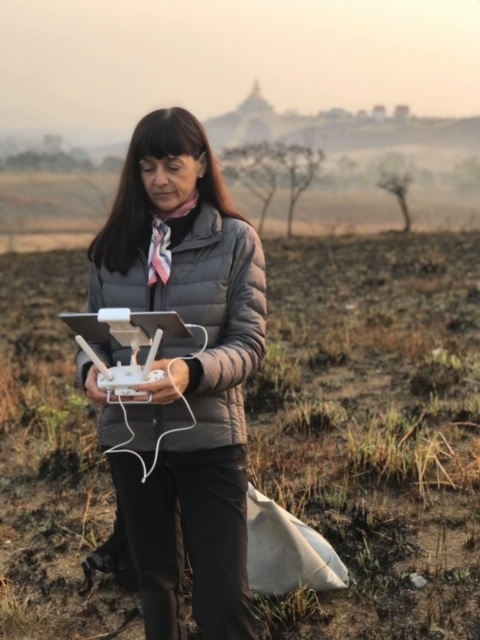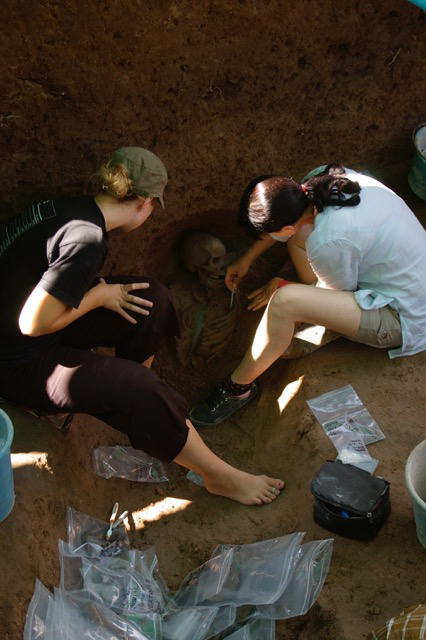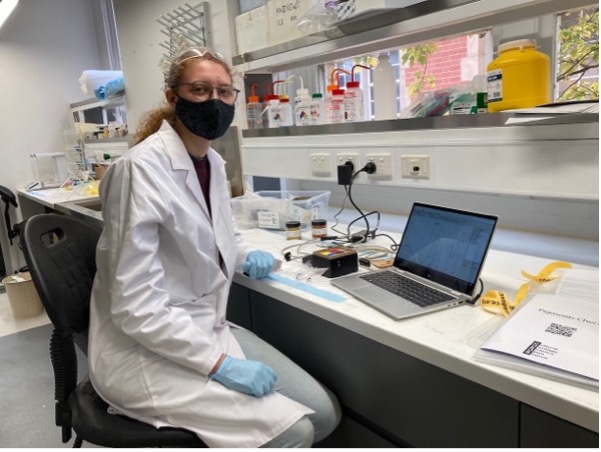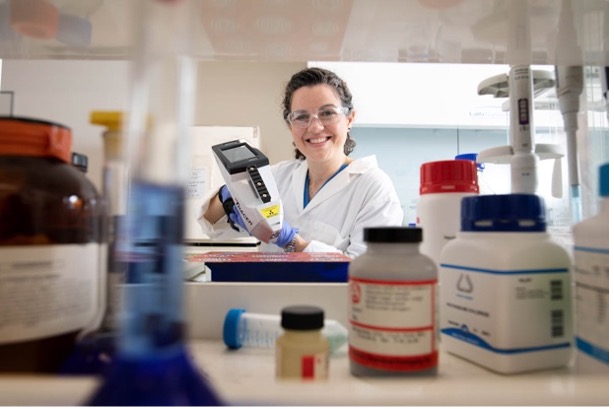Archaeological Science
Our research uses a variety of analytical methods from the earth sciences to address key questions in archaeological science in Australia and worldwide, and the deep history of Indigenous cultures.
The Archaeological Science cluster, led by Professor Rachel Popelka-Filcoff, Rock Art Australia Minderoo Chair in Archaeological Science, brings together dating techniques, geochemical, paleomagnetic, mineralogical and isotopic analyses, palynology and geomicrobiological methods to bear on important problems of the deep history of Indigenous cultures in Australia and elsewhere.
Our interdisciplinary work spans cultures and geography to understand key questions around the age, history, provenance, technology and composition of cultural heritage materials and sites and those who created them, and brings together scientists, humanities and social science scholars and communities.
Coordinator
Rachel Popelka-Filcoff – archaeo-science@unimelb.edu.au
Streams
Rock art dating
Research currently includes a large multi-disciplinary project to date the remarkable Aboriginal rock art in the Kimberley region of north-western Australia, in collaboration with archaeologists, traditional owners and other researchers in Australia and elsewhere.
The work is based on:
- Radiocarbon dating of mud wasp nests,
- uranium-series dating of surface mineral accretions,
- cosmogenic radionuclide dating of rock falls, and
- Optically Stimulated Luminescence (OSL) dating of large mud-wasp nest complexes that are related to the previously established rock art sequence.
The work also involves detailed studies of the geomorphologic evolution of rock shelters, the mineralogy and geochemistry of rock surface processes, and catchment-wide landscape evolution patterns.
More information: Rock Art Australia
Paleoclimatic and palaeoenvironmental reconstruction
Current research includes the high-resolution analysis of lake and marine sediments and speleothems from Australia and other regions across the globe to provide comprehensive reconstructions of environmental change through time. Other research focuses on incremental analyses (sclerochronology) of accretionary hard tissues such as mollusc shells.
Chemical changes in these tissues generate records of environmental change and seasonality to understand human-environment interaction and has been applied to studies ranging from the expansion of modern humans and Neanderthal extinction, to understanding seasonal resource use and the impact of environmental change across indigenous Australian archaeological sites.
OSL dating and geomorphology
Our researchers investigate geomorphic contexts, site formation processes and conduct luminescence dating of sediments including new approaches to analysing surface artefacts to understand changing palaeoenvironmental conditions throughout the Quaternary, ecosystem dynamics, human settlement patterns and the role of climate in megafaunal extinctions.
Ochre archaeomicrobiology
New research is being undertaken to identify the origins and movements of Australian archaeological ochre through the development of a novel tool combining genomic and chemical analysis. This project hopes to answer significant questions about past human behaviour, in terms of trade, cultural interactions, territoriality and colonisation. This collaboration of analytical chemists, archaeologists and genomic scientists and collaboration with Indigenous communities works with advanced methods in compositional analysis, genomic sequencing and experimental archaeology.
Human mobility and megalithic cultures in Southeast Asia
Research is also being conducted on important prehistoric sites in Laos and Cambodia. Current research in Cambodia is focussed on Iron Age societies and the emergence of socio-political complexity prior to the rise of the Angkorian state.
This involves the isotopic analysis of ancient human skeletal material to investigate residential mobility and resource acquisition strategies, the creation of isotopic baseline maps and compositional analyses of material culture. Research in Laos centres on the UNESCO World Heritage inscribed Plain of Jars.
This interdisciplinary research includes:
- Optically Stimulated Luminescence (OSL) dating of sediments beneath the jars to gauge the period of emplacement,
- isotopic analyses of skeletal material found buried around the megaliths,
- the analysis and conservation of material culture and
- remote sensing to geo-reference the megaliths for spatial analysis and ongoing conservation measures.
More information: Plain of Jars Archaeological Research Project
Geochronological framework for human evolution
Other important research involves high-resolution dating of volcanic ash beds associated with important hominin fossil and archaeological sites in the Turkana Basin of northern Kenya using new multi-collector 40Ar/39Ar dating techniques.
Ancient pyrotechnology and paleomagnetic dating
Our researchers also use paleomagnetic and archaeomagnetic analysis for Australian Archaeological Science. The magnetic properties of cultural geological materials inform on ancient pyrotechnology, use and provenance, and site formation processes. Key projects include investigation of Aboriginal pyrotechnology at the UNESCO World Heritage cultural landscape of Budj Bim and paleomagnetic dating of lake sediment archives.
ArchaoScience Interdisciplinary Workshop
The Archaeological Science stream was involved in the Industry, Government, Community and Research Partnership panel in October 2022. The panel comprised:
- Jeremy Smith (Principal Archaeologist, Heritage Victoria)
- Ian Travers (CEO Extent Heritage)
- Louise Murray (Research Manager, First Peoples Collection, Strategy and Culture, The University of Melbourne)
- Dr Caroline Spry (Senior Heritage Advisor and Archaeologist at Wurundjeri Woi Wurrung Cultural Heritage Aboriginal Corporation).
The School of Geography, Earth and Atmospheric Sciences has a range of analytical facilities to support Archaeological Science.
These facilities include laboratories for uranium-series, optically stimulated luminescence (OSL) and 40Ar/39Ar dating. Other geochronological methods including U-Th-Pb, fission track and (U-Th)/He dating, as well as dedicated facilities for pre-treatment of radiocarbon samples and cosmogenic radionuclide sample preparation for analysis can be located within the Melbourne Thermochronology Research Group.
The School also houses a comprehensive range of analytical facilities for geochemical, isotopic, mineralogical and geomicrobiological analysis and many other analytical facilities can be accessed through University Platforms such as TrACEES (Trace Analysis for Chemical, Earth and Environmental Sciences) and MCFP (The Materials Characterisation and Fabrication Platform).
Our researchers also have strong research relationships with national laboratories such as ANSTO (the Australian Nuclear Science and Technology Organisation) and the Australian Synchrotron and the team works closely with communities, cultural organisations, universities, and museums within Victoria, around Australia and worldwide.
Email archaeo-science@unimelb.edu.au to contact the Archaeological Sciences stream, or contact an individual researcher below.
